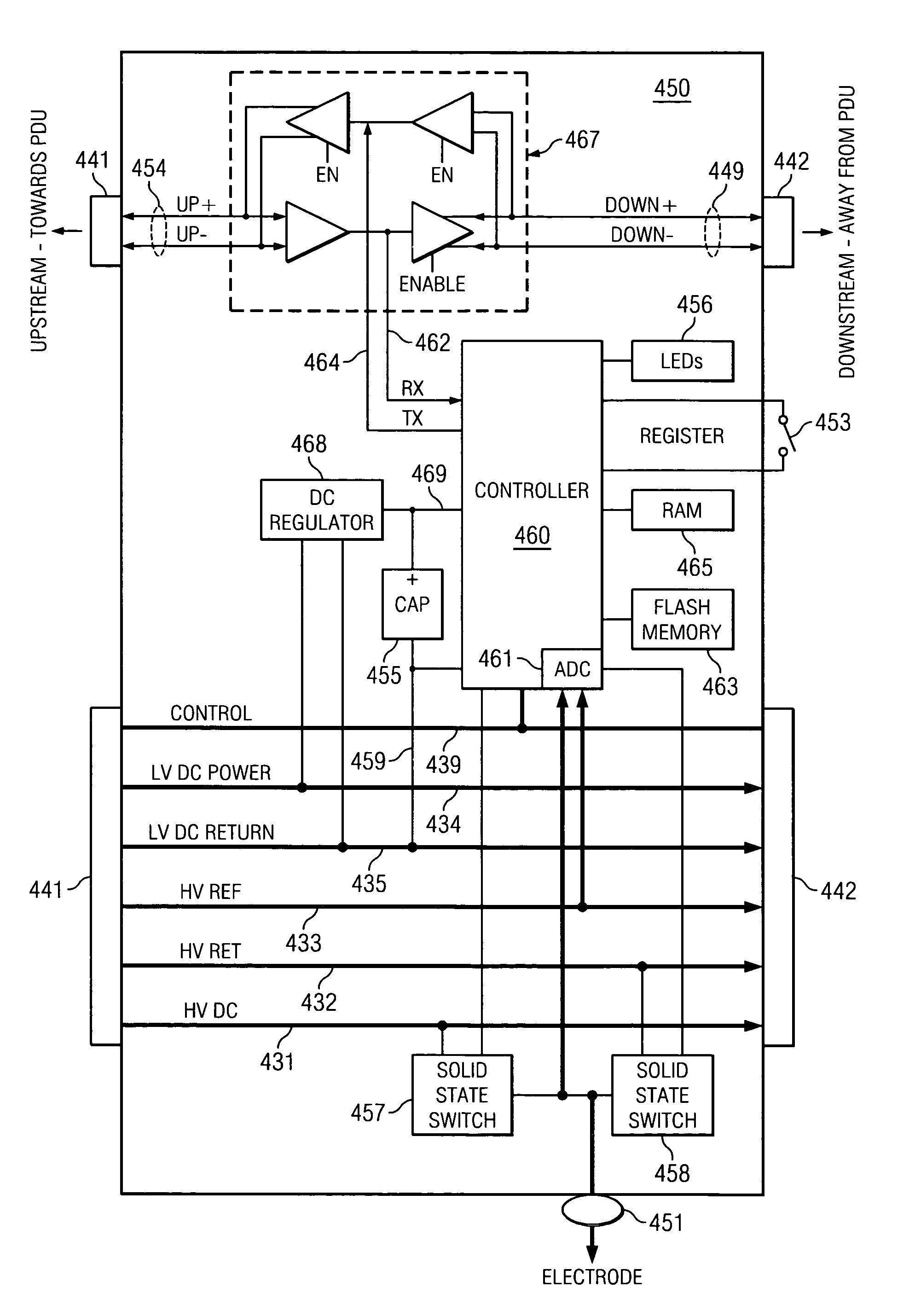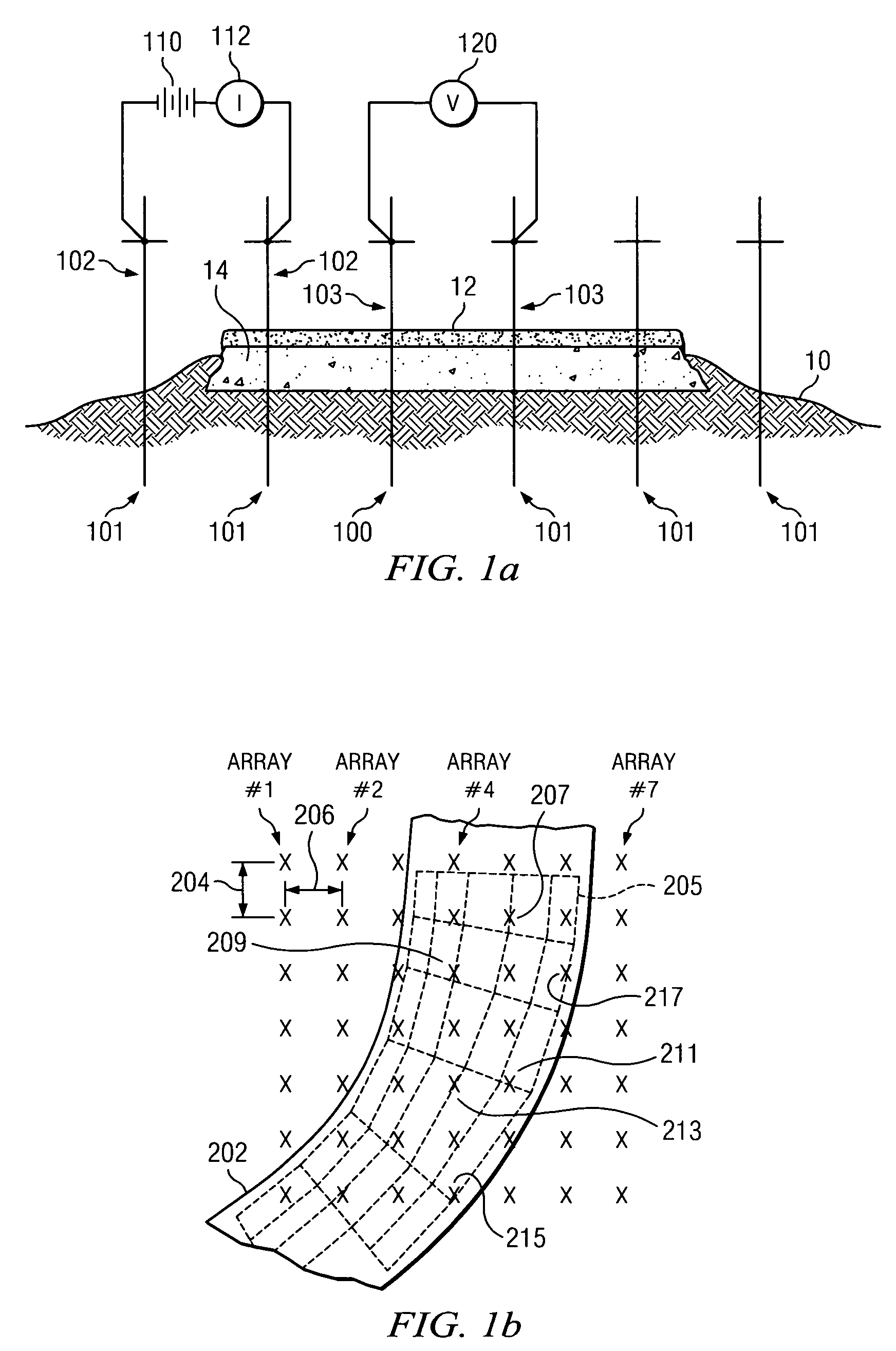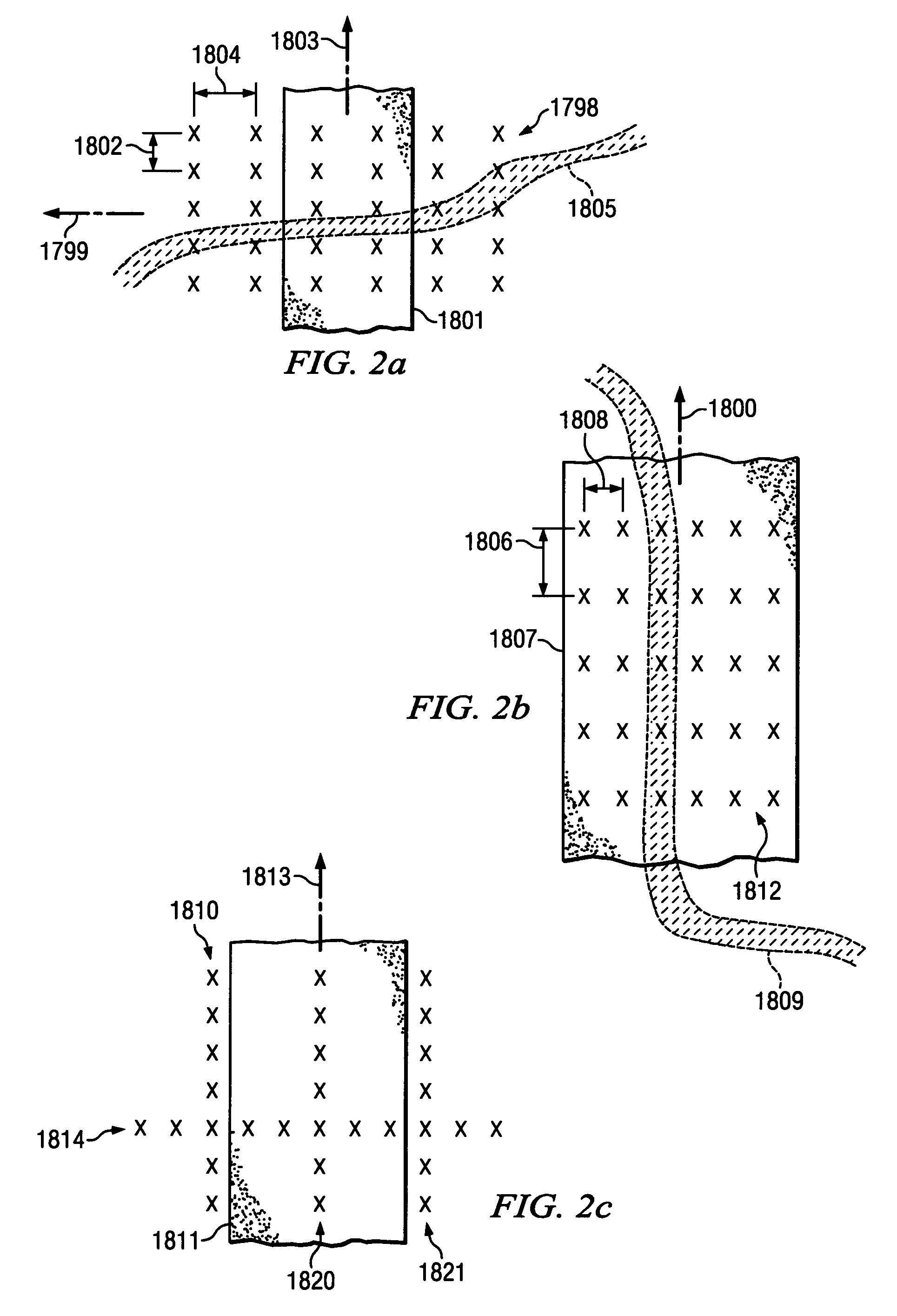Remotely reconfigurable system for mapping subsurface geological anomalies
a remote reconfigurable system and geological anomaly technology, applied in seismology, pulse technique, instruments for waterlogging, etc., can solve the problems of reducing the resistance to tensile forces and vibration, prone to cracking of slab-on-grade foundations, and extraordinary resistance to compressive forces of typical concrete, so as to achieve the effect of not requiring excessive downtim
- Summary
- Abstract
- Description
- Claims
- Application Information
AI Technical Summary
Benefits of technology
Problems solved by technology
Method used
Image
Examples
Embodiment Construction
[0061]A schematic diagram of the theory used to gather data as used in the preferred embodiment is shown in FIG. 1a. A series of electrodes 101 are inserted, typically in a line, into ground 10. FIG. 1 shows the preferred embodiment as applied to an asphalt paved roadway. Asphalt layer 12 is applied on top of mid-level layer 14. Adhering to typical road construction principles, mid-level layer 14 may be a layer of concrete, steel reinforced concrete, or a compacted layer of gravel. In some situations, asphalt layer 12 may not be present. Electrodes 101 are inserted through both asphalt layer 12 and mid-level layer 14 and into ground 10 in order to determine resistivity and to map and detect subsurface soil anomalies under the roadway. The locations of electrodes 101 are typically in a regular pattern with a known interstitial distance between each electrode. In most situations, the known interstitial distance ranges from 6 to 10 feet and an equal interstitial distance is used betwee...
PUM
 Login to View More
Login to View More Abstract
Description
Claims
Application Information
 Login to View More
Login to View More - R&D
- Intellectual Property
- Life Sciences
- Materials
- Tech Scout
- Unparalleled Data Quality
- Higher Quality Content
- 60% Fewer Hallucinations
Browse by: Latest US Patents, China's latest patents, Technical Efficacy Thesaurus, Application Domain, Technology Topic, Popular Technical Reports.
© 2025 PatSnap. All rights reserved.Legal|Privacy policy|Modern Slavery Act Transparency Statement|Sitemap|About US| Contact US: help@patsnap.com



